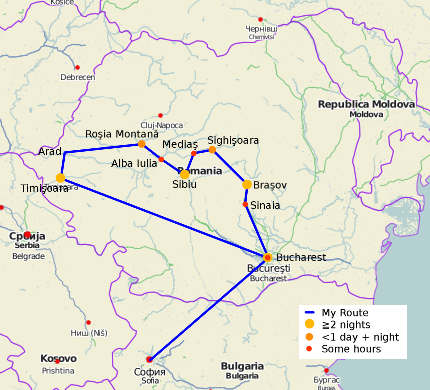After Amsterdam I went to Lille, to meet Noémie, who was in my Bulgarian language course last year in Burgas. She invited everybody from the course to her home – unfortunately I was the only one who accepted the invitation. I was rather surprised to arrive on the French national holiday (July 14th), and we used to opportunity to see a military parade (which was rather boring) and fire works. I was wondering that the fire works were announced for 11pm, but it made sense, it’s bright really long in that part of Europe (and the sky looked just amazing before it got dark – I hope you can get an impression on the pictures). We saw the fire works from the central park, where they were accompanied by music and a story – the story of Europe after 2nd world war, as the day was the 20th anniversary of the fall of the Berlin wall. It was impressive.

The military parade |

The sky, looking like water (at 22:58) |

Fireworks |
The rest of the days I spent sight seeing, in Lille and in Villeneuve d’Ascq, the home town of Noémie, just outside of Lille. It’s a calm town, a lot of green areas. And there’s a fancy automatic driver-less metro which offers a fast connection between to Lille. The architecture still has many elements which you can find in Holland or in Northern Germany, e.g. façades made from bricks.

The puss in boots in front of the Chateau in Villeneuve d’Ascq |

Park in the same town |

Noémie |

Temporary exhibition of dragon babys in Lille |

Modernised old church |

View of a street in Lille |
As I still had a couple of days left until my flight to Vienna (on 22nd July from Brussels), I searched for more places to visit. Luckily I had talked to Ilona, one of my former flat-mates in Sofia some time ago, and she told me she will be in Rouen in July. So my next stop: Rouen, another 3 hours south-west of Lille. Ilona told me, she won’t be able to host me, so I searched for a CouchSurfing host, and I found Morgane. Ilona arrived a day before me, and I got an agitated message from her, that her people failed to pick her up from the airport (in fact they came, but 45 minutes late). So she went to Rouen on her own, and I asked Morgane if she could ask her … which she accepted, although it was already 1am (CouchSurfing is just a great idea).
On my way to Rouen I had a short stop in Amiens which I used for a walk. By the way. I could find a CityBike-system like in Vienna (they have the same in Lille too), sweet mini buses and some churches. One of the churches was strange, it was open to visitors, but there was nothing inside. No people, no benches, just a small altar. And apparently nobody had cleaned for several months, even the air was very smelly. Spooky.

An impressive cathedral in Amiens |

Spooky church |

Clock somewhere in the centre |
In Rouen: churches again. I have to admit, they look really impressive, but after the third city they are getting boring, because they all look the same. And cold and grey inside. It was a real relieve to visit the modern church „Jeanne d’Arc“, just next to the place where she was burned. A wooden roof, which makes a very warm atmosphere. The architecture of the buildings in Rouen already looks pretty different, many FACHWERKHAEUSER. A big historic centre, with cafes, shops and people (but hardly any ATMs).

The cathedral in Rouen |

Narrow street with historic buildings |

More historic buildings |

The church „Jeanne d’Arc“ |

inside the church |

Morgane and some friends |
You might have noticed, public and alternative transportation is very interesting to me. So here are some more pictures to this topic:

Bus system in Rouen (what is this nozzle on the buses)? |

Metro in Rouen |

Small buses in Amiens |

CityBikes in Amiens |

In Lille the passengers are protected from falling on the tracks |

I think those trains are no longer real used (seen in Amiens) |
Communication with people was hard, the prejudice, that French people only speak French is rather true. On the other hand I was really surprised how much French I still understand (I learned it many years ago in school), I remembered many words. But I totally failed to speak (no words, no grammar). But it was not really necessary, Morgane is translator for English and German (and French for sure), so no problem there. We spent a nice time together, talking, cooking, watching movies.
Right now I’m on my way to Brussels. I still don’t have a CouchSurfing-host for the night, I was very late to ask. I hope I still get a positive answer during the day. Tomorrow is my flight back to Vienna, and on Thursday I have to work again (after nearly 11 months).
